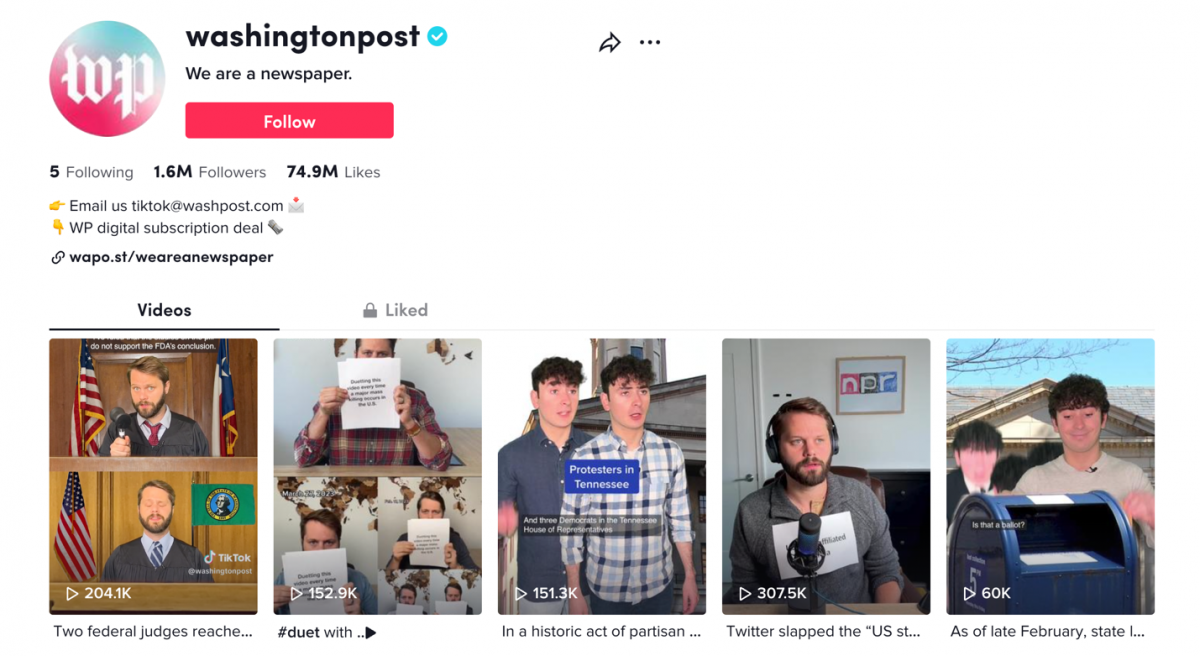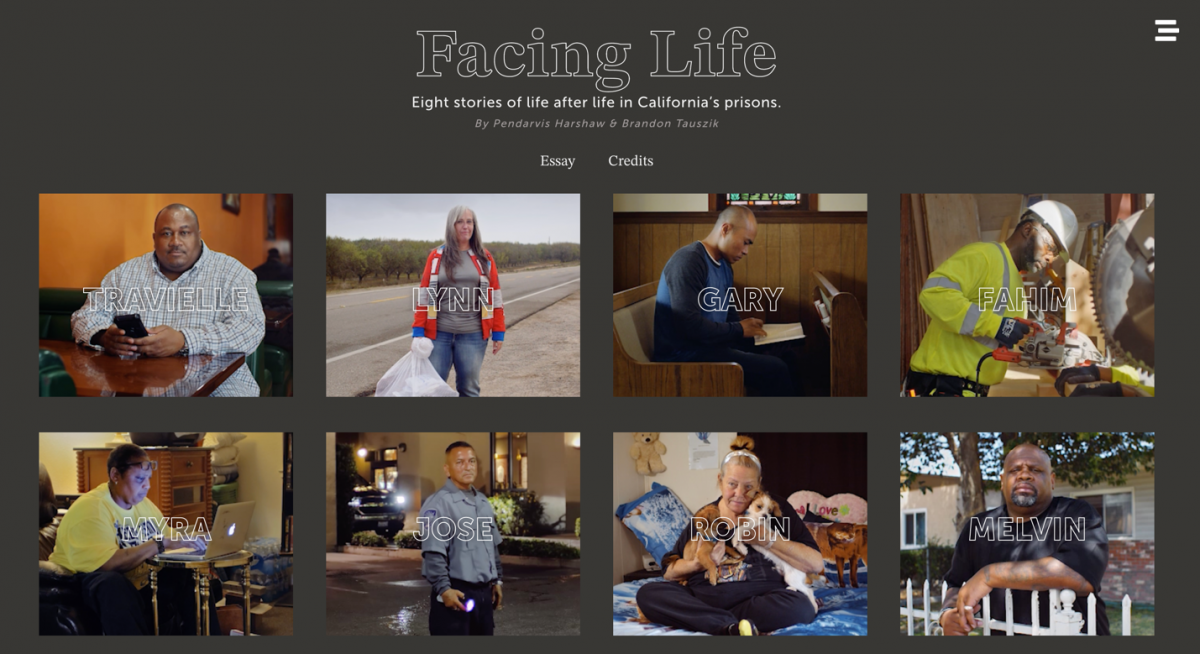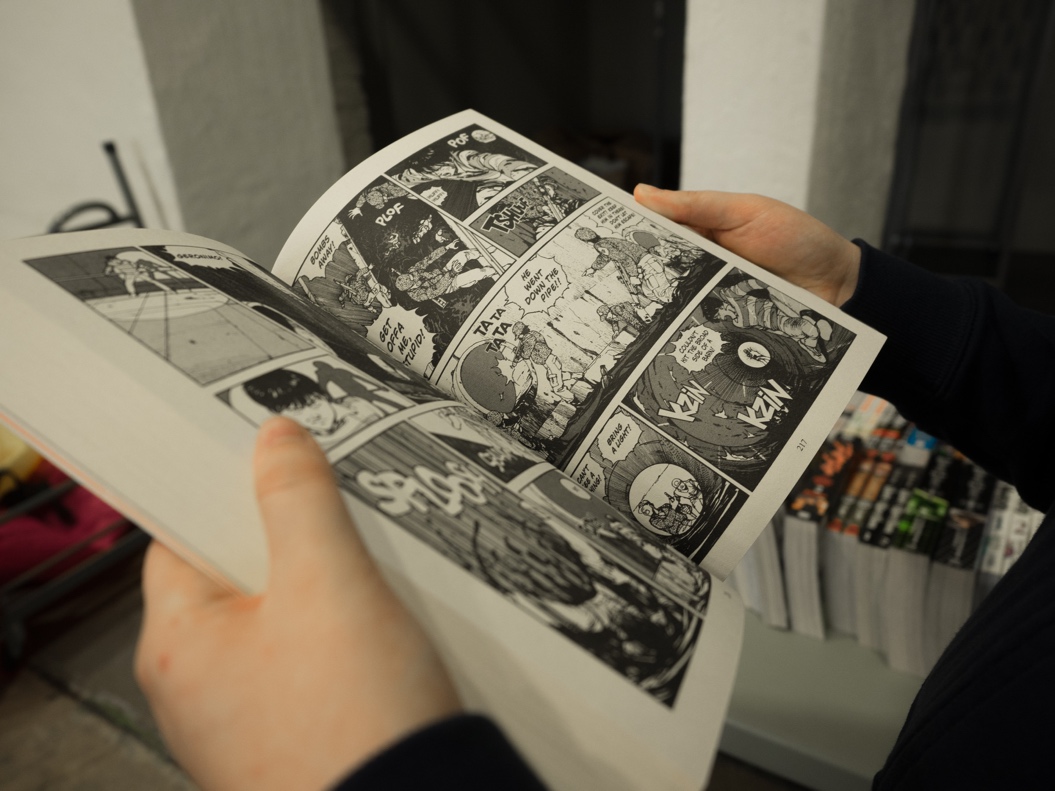Why We Should Cheer, Not Fear, More Visual Storytelling in the News
No one should be upset that text-based journalism is dying.
While this may be hyperbolic, it is undoubtedly the case that the future of media consumption lies away from the written word. New forms of media are taking us away from the practice of deep reading, and it is no longer an essential part of the news business.
Visual storytelling is the revitalization the industry desperately needs for a stronger, more sustainable future. With our collective shrinking attention span, it’s no wonder people are looking for different ways to consume the same content in a fast and easy-to-understand format: news, TikTokified.

Visual storytelling provides a way for news organizations to communicate complex stories quickly and effectively. Visuals can create more personal and evocative stories on critical issues, communicating effectively without the barriers to access of inherently loftier text. The appeal is obvious. For example, visual stories like “The New York City Mixtape.” The piece showcases the rich cultural heritage of the city’s neighborhoods, “a global soundtrack” for a global city, and adds a holistic humanity to The New York Times’ coverage.
Alvin Chang was the head of visuals and data at The Guardian US and is now a data journalism professor at the New School in New York. Chang talks about the power of visual storytelling in more effectively communicating the complex issues of our turbulent world. “I’m interested in communicating clearly to my reader in an engaging and accessible way,” he said, breaking down concepts often “exclusively for certain audiences who are used to reading certain news and have a lot of background.”
“There is a video I did about Boeing airplanes when they kept crashing,” Chang said. “Few visuals had explained what the reengineering looked like and why it had caused problems, even on network news when they’re just running through the basicelements of the story. This video provided the nuance you probably wouldn’t get if you weren’t thinking about how to explain complicated concepts concisely.”
Science supports the case. Studies have shown that the human brain processes visual content 60,000 times faster than text and that 90% of information transmitted to the brain is visual. Graphics increase comprehension, recollection, and retention. People of all ages, cultures and languages can understand them, making news accessible to a global audience. Visuals are also highly shareable on social media platforms, making them a powerful tool for spreading information quickly and widely and helping news organizations to compete in an incredibly diluted media ecosystem.
Written journalism, of course, can provide greater depth in coverage because it allows for room to convey nuanced ideas and detailed analysis, like this column. Some would argue therefore that while visual storytelling has its strengths, it is not necessarily better than traditional print journalism and is best used in combination to provide a comprehensive and engaging storytelling experience.
I, like Chang, believe there must be more of an equal partnership. More time and money are needed to balance the dynamic. “Words are far easier to produce,” Chang admitted, but explained: “It’s incredibly powerful because you can encode these huge ideas into single words. I can tell you one word and communicate so much if I say “philosophy.” The problem with that is if I say “orange,” you’re probably thinking of an orange, and I’m thinking of a different orange. There’s a lack of precision when it comes to language alone.”
To be clear, we should all be worried about deep reading’s rapid acceleration towards extinction. As far back as 2008, in The Atlantic, Nicholas Carr wrote, “The Net seems to be chipping away my capacity for concentration and contemplation… once I was a scuba diver in the sea of words. Now I zip along the surface like a guy on a Jet Ski.” This was even before social media had hit full speed.
But he also said, “The Net’s influence doesn’t end at the edges of a computer screen, either. As people’s minds become attuned to the crazy quilt of Internet media, traditional media must adapt to the audience’s new expectations.” And that’s what I propose here. Rather than panic with concern that their readers may once again lose concentration three paragraphs into an article because of an email “ping”, traditional media should continue to adapt to the world we find ourselves in, improvise and overcome.
The advent of cutting-edge media technologies has always gone together with journalism, which has constantly evolved. For example, early newspapers consisted of just the written word beginning with the earliest printing presses in the 17th century. Still, as soon as better technology allowed, engraved illustrations and diagrams were added to written accounts. We must continue heralding new dawns in the industry, bolstering our technical capacity, and broadening our horizons.
“Facing Life” is a 2022 multimedia project by Pendarvis Harshaw and Brandon Tauszik that focuses on the California penal system. The visual story follows the journey of eight people after incarceration who had served decades of life sentences behind bars, only to be released with very little support. Creating “Facing Life” combined different multimedia skill sets: photos, videos, and text, and even cinemagraphs, a hybrid between still images and film. The technology remains a largely unexplored medium in multimedia visual storytelling projects.

“They’re candid and are great for showing who this person really is,” Harshaw said. He believes the choice of medium and visualization technology was the perfect fit for this project: “One of the benefits is that people consume media nowadays on their phones. It’s a very scrollable site. You’ll be lying down in your bed and just get lost in the visuals. Or you can dive deep into all the stories and the links and learn.”
Part of the reason for the success of “Facing Life” is that it is visual storytelling in action, supplementing the written word. “One of the folks we interviewed, Lynn, talks about having a pumpkin spice latte for the first time. It’s a very cute moment, a very human moment. If I had written that, it’d be like, ‘What, why did you even include this?’ To have the video of her expressing it and holding the pumpkin spice latte close to her chest drives the emotion home,” he said.
Given these technological advancements, there is understandable concern that style and spectacle may be prioritized over substance. Many worry that with the ability to create stunning visuals, it is easy to forget the importance of fundamental journalistic principles vital for a healthy information ecosystem. The implications of these developments on our democracy and freedom of expression would be severe.
A robust ethical compass must guide innovations in visual storytelling, driven by a desire to push boundaries and experiment alongside a commitment to social responsibility. This means considering the audience, the context and the story’s message. With the ability to create realistic and immersive visuals that accentuate content, there exists a responsibility to ensure that the stories being told are ethical and responsible and that practitioners are aware of the potential impact of their work

Aaron Reiss’ interactive portfolio explores how people imagine and shape the places they inhabit, bringing cities to life with rich detail in pieces like “The Sounds of CDMX,” in which he was able, as he put it, to “make an archive of sounds that was both exhaustive and expressive of the experience of being in the city,” exploring audio “in a way that shed light on the lives of these street vendors and the meaning of their work.” He believes the piece would not have the same power using text alone.
“It’s all of it together. The sound is vital, the heart of the story. But just sounds and text would be pretty bland,” Reiss said. “The illustrations bring it to life and bring out the flavor, like salt in a rich broth. They capture the imagination and bring you to the city. It would be thin and forgettable without the whole.” By incorporating visual storytelling into their reporting, news organizations can better serve their readers and provide a more complete understanding of the world around us.
Our stories aren’t resonating as profoundly with their audiences as they deserve to be with the effort invested. As journalists, instead of rushing to text, ask how we might use visual content, charts, or interactive experiences to enhance the same message. It is possible the best way doesn’t include words at all. There is much to be hopeful about in journalism today, but much more to improve. Let’s start here.
- Why We Should Cheer, Not Fear, More Visual Storytelling in the News - April 12, 2023
- Zach Silber — how to influence public opinion with data-driven analytics - October 15, 2021





